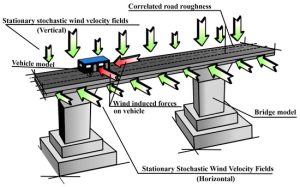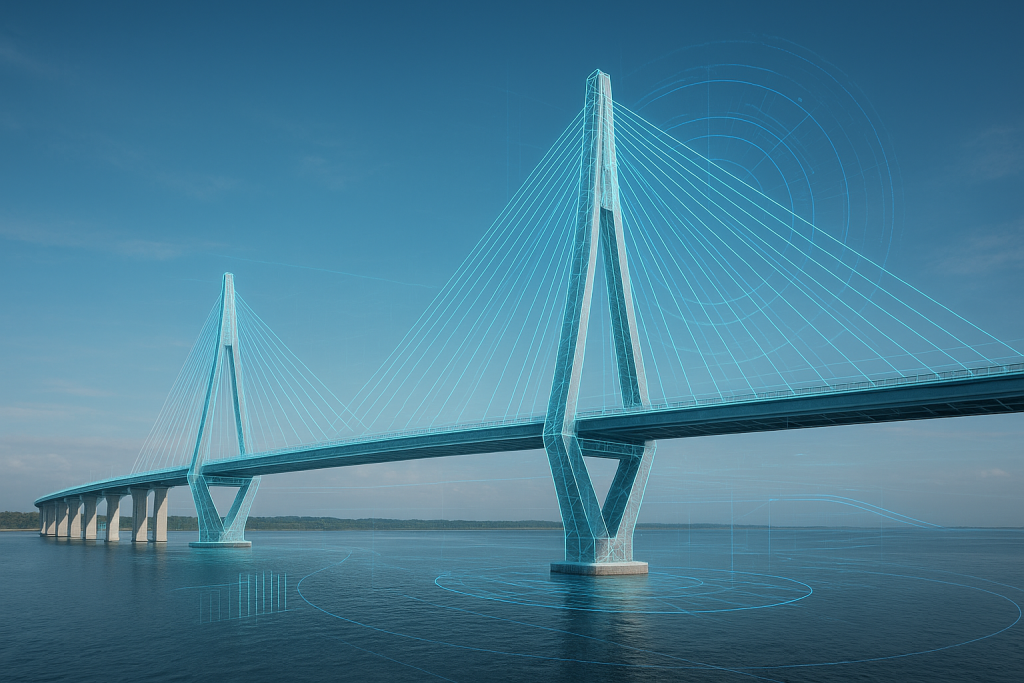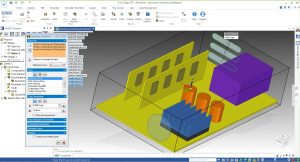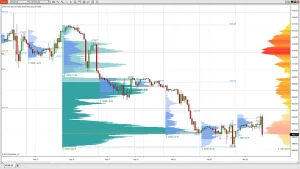Bridges are among the most iconic engineering achievements in human history. From the Roman aqueducts to modern megastructures like the Akashi Kaikyō Bridge in Japan, bridges symbolize connection, progress, and resilience. But behind every bridge lies an immense amount of planning, testing, and foresight. One of the most transformative tools in this process is bridge simulation software.
By simulating loads, seismic events, wind behavior, and even long-term material fatigue, engineers can predict how a bridge will perform under countless real-world conditions—before construction even begins. This not only improves safety but also reduces costs, prevents failures, and extends the service life of infrastructure.
In this article, we explore why bridge simulation matters, the software platforms leading the field, real-world cases where simulation prevented failure, and how AI is shaping the future of infrastructure design.
Why Simulation Matters Before Construction
Constructing a bridge without simulation would be like flying an airplane without testing it in a wind tunnel. Bridges are exposed to extreme conditions throughout their lifetimes: heavy traffic, storms, earthquakes, and long-term material wear. Engineers must anticipate these stresses in advance.
Key Reasons Simulation is Crucial
Risk Identification
Simulation models allow engineers to identify weaknesses—such as points of high stress or joints vulnerable to fatigue—before the first beam is laid. This prevents catastrophic structural problems later.
Cost Efficiency
Modifying designs during construction is vastly more expensive than resolving issues during digital modeling. Simulation helps reduce rework, saving millions in large-scale projects.
Safety Enhancement
Public safety is paramount. Simulation ensures that bridges can withstand extreme conditions like hurricanes, floods, and seismic events.
Regulatory Compliance
Most countries require simulations as part of bridge design codes. Authorities expect evidence that the structure has been tested against relevant safety standards.
Optimized Performance
Engineers can explore multiple design alternatives, choose the most efficient material mix, and optimize load-bearing capacity.
In essence, simulation transforms bridge design from trial-and-error to data-driven engineering.

Dynamic Load Simulation for Traffic and Wind
Two of the most dynamic and unpredictable factors affecting bridges are traffic loads and wind forces.
Traffic Load Simulation
Traffic on bridges is not uniform. It varies in:
- Vehicle type (cars, buses, trucks, trains).
- Weight distribution (axle loads).
- Density (rush-hour congestion vs. low-traffic nights).
- Dynamic effects (braking, acceleration, lane changes).
Simulation allows engineers to model these variations. For example:
- A truck convoy may generate concentrated loads on specific spans.
- Braking vehicles may introduce longitudinal forces.
- Traffic jams may lead to static loading beyond design assumptions.
Without accurate traffic simulations, bridges risk developing fatigue cracks or uneven load distribution, which compromises long-term performance.
Wind Load Simulation
Wind can be even more dangerous than traffic. The infamous Tacoma Narrows Bridge collapse (1940) demonstrated how aerodynamics can cause catastrophic oscillations. Today, wind tunnel tests are often combined with Computational Fluid Dynamics (CFD) simulations to predict:
- Vortex shedding: Oscillations caused by airflow detachment.
- Turbulence: Random wind gusts that create unpredictable stresses.
- Flutter instability: Resonance that can lead to large-amplitude oscillations.
Modern bridges, especially long-span cable-stayed or suspension types, rely heavily on wind simulations to guarantee aerodynamic stability.
Earthquake and Seismic Simulation Tools
In seismic regions, earthquakes pose a significant risk to bridge stability. Unlike static loads, earthquakes introduce dynamic, unpredictable, and multi-directional forces.
Earthquake Impacts on Bridges
- Ground shaking: Causes vibrations and displacement.
- Soil liquefaction: Weakens foundations by turning soil into a fluid-like state.
- Seismic isolation failures: Bearings and expansion joints may fail under extreme shaking.
Role of Simulation
Modern bridge simulation software uses Finite Element Analysis (FEA) and nonlinear time-history analysis to model seismic activity. These simulations allow engineers to:
- Design flexible piers and abutments.
- Incorporate seismic dampers and isolators.
- Reinforce foundations to withstand lateral movements.
For example, Japan’s Akashi Kaikyō Bridge was designed to resist earthquakes up to magnitude 8.5 using extensive seismic simulation models.
Top Bridge Simulation Platforms
Several powerful software platforms dominate the field of bridge simulation.
LARSA 4D
- Specialized in time-dependent construction staging.
- Simulates material creep, shrinkage, and prestress losses.
- Ideal for long-span bridges such as suspension and cable-stayed types.
CSiBridge
- Integrated platform for modeling, analysis, and design.
- Features nonlinear FEA, seismic simulation, and dynamic load analysis.
- Automated load application for traffic, wind, and seismic conditions.
- Strong integration with BIM workflows.
MIDAS Civil
- Widely used in Asia for railway and highway bridges.
- Provides detailed analysis for soil-structure interaction.
SAP2000
- General structural analysis tool with strong bridge modules.
- Known for versatility and wide adoption.
ANSYS
- A broader engineering simulation tool, but used for highly complex CFD and material simulations in bridge projects.
Each platform offers unique advantages. Engineers typically select based on project size, complexity, regulatory requirements, and budget.
Advantages of 3D Modeling in Simulation
Gone are the days when 2D drawings sufficed. Today, 3D modeling combined with simulation provides enormous benefits:
Better Visualization
Engineers can visualize stress distributions, load paths, and potential weak spots.
Clash Detection
Early identification of design conflicts between structural, mechanical, and electrical components.
Improved Collaboration
3D models make it easier for architects, engineers, and contractors to collaborate.
Integration with BIM
Building Information Modeling (BIM) allows for data-rich digital twins that remain useful throughout the bridge’s lifecycle.
Accurate Material Estimation
Reduces waste and improves procurement accuracy.
3D simulation not only enhances technical accuracy but also facilitates stakeholder communication, ensuring everyone—from engineers to government authorities—understands the design.
Real-World Examples of Bridge Failures Prevented by Simulation
Simulation has already proven its worth in preventing catastrophic failures:
Millennium Bridge, UK (2000)
When London’s Millennium Bridge opened, pedestrians experienced swaying motion due to synchronous lateral excitation. Advanced simulations quickly diagnosed the issue, leading to the installation of dampers.
Akashi Kaikyō Bridge, Japan
The longest suspension bridge in the world underwent years of seismic and wind simulations. These ensured that the bridge could withstand magnitude 8+ earthquakes and typhoons.
Øresund Bridge, Denmark–Sweden
Simulation was critical in ensuring aerodynamic stability under high winds and ice loads.
Confederation Bridge, Canada
Engineers used ice-load simulations to design piers capable of withstanding heavy sea-ice pressure.
Without simulation, these bridges might have suffered catastrophic failures, endangering lives and wasting billions of dollars.
Future of Bridge Simulation with AI
Artificial Intelligence (AI) is revolutionizing the field of bridge simulation.
Key AI Applications
Predictive Analytics
AI can forecast how a bridge will age under traffic, climate, and seismic conditions, enabling proactive maintenance.
Automated Design Optimization
Algorithms can suggest design alternatives that maximize safety while minimizing material costs.
Digital Twins
Real-time digital replicas of bridges, fed by IoT sensors, allow continuous monitoring and predictive simulation.
Anomaly Detection
Machine learning can detect unusual vibration patterns or stress levels, signaling potential problems before they escalate.
Sustainability Analysis
AI can simulate the environmental impact of materials, helping engineers choose greener alternatives.
The integration of AI with simulation tools marks the next frontier—bridges that are not only safer but also smarter and more sustainable.
Conclusion
Bridge simulation software is a cornerstone of modern civil engineering. From dynamic load analysis to seismic resilience, these tools ensure that bridges remain safe, efficient, and durable throughout their lifespans. Case studies from around the world demonstrate that simulation has already saved countless lives and billions in infrastructure costs.
As AI and digital twin technologies become mainstream, the future of bridge simulation looks even brighter. Tomorrow’s bridges will not just be structures—they will be intelligent systems capable of monitoring themselves, predicting failures, and adapting to new challenges.
For governments, contractors, and engineers alike, simulation is no longer optional—it is the foundation of safe, reliable, and future-ready infrastructure.




